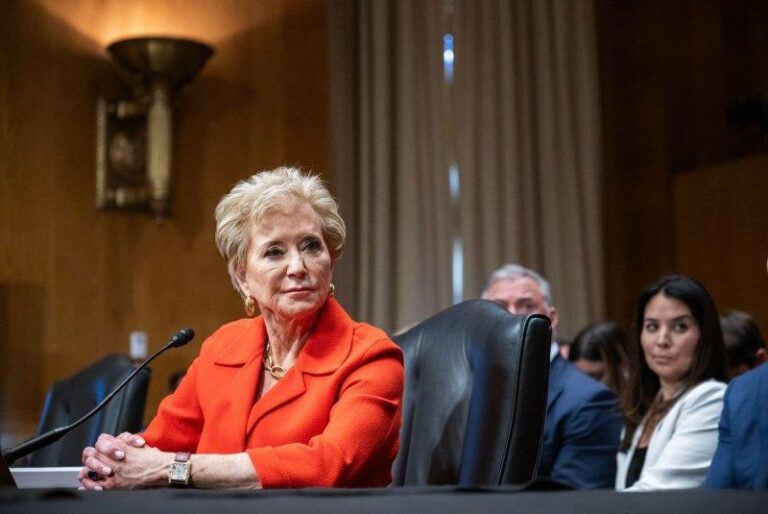Major Staff Cuts at U.S. Education Department Signal Shift in Operations
The U.S. Department of Education is embarking on one of the most extensive workforce reductions in its history, aiming to slash nearly half of its employees. This initiative, introduced during the Trump administration, represents a fundamental change in the federal agency’s approach to managing education policy nationwide. The downsizing is part of a broader government effort to enhance efficiency but has ignited concerns about the department’s future ability to effectively support schools and oversee educational programs amid ongoing challenges.
Highlights of the workforce reduction plan include:
- Elimination of approximately 2,000 jobs across various divisions.
- Targeting redundant roles and non-critical functions to streamline operations.
- Greater dependence on state and local education authorities to carry out federal mandates.
- Potential weakening of national research and data collection efforts.
| Department Division | Percentage of Staff Cut | Approximate Number of Positions Eliminated |
|---|---|---|
| Policy Development and Program Oversight | 45% | 700 |
| Research and Data Services | 50% | 300 |
| Student Assistance Programs | 40% | 500 |
| Administrative Support and Operations | 55% | 450 |
Concerns Over Education Programs and Student Support Services
The drastic reduction in staff has raised alarms among educators, policymakers, and advocacy groups who worry about the department’s diminished capacity to oversee critical programs. Experts caution that fewer employees could lead to delays in compliance checks, grant administration, and policy assessments, potentially compromising accountability. This is especially troubling for vulnerable student groups who depend on federal oversight to guarantee fair access to educational resources.
In addition to oversight challenges, the cuts threaten the continuity and effectiveness of student support services. Programs that assist with special education, college readiness, and other vital initiatives rely heavily on department personnel to function efficiently. The workforce downsizing may result in:
- Longer wait times for responses to inquiries from students and educators.
- Reduced ability to develop and launch new support initiatives.
- Weakened monitoring of student progress and outcomes.
| Area Affected | Possible Outcomes |
|---|---|
| Program Monitoring | Slower evaluations and less evidence-based policymaking |
| Grant Administration | Delays in fund distribution and increased administrative errors |
| Student Services | Decreased outreach and weaker support programs |
Challenges to Key Education Initiatives Due to Staffing Cuts
The reduction in personnel is expected to hinder the department’s ability to implement and sustain major education reforms. Programs focused on literacy improvement, special education expansion, and college access are at risk of delays or diminished effectiveness as experienced staff depart. Stakeholders express apprehension that losing nearly half the workforce could disrupt essential partnerships with state and local education agencies, which are crucial for these initiatives’ success.
This downsizing coincides with a broader organizational restructuring, but experts warn that critical areas may face capacity shortages, including:
- Enforcement of civil rights protections in education.
- Implementation of new federal accountability standards.
- Management of grant programs targeting underserved populations.
| Focus Area | Current Staffing | Projected Staffing Post-Cuts | Risk Assessment |
|---|---|---|---|
| Oversight of Special Education | 120 | 65 | High |
| Support for Title I Programs | 90 | 45 | Moderate |
| College Access and Readiness | 75 | 40 | High |
Strategies to Minimize Disruption and Maintain Essential Services
To navigate this unprecedented downsizing while preserving critical functions, department leadership must prioritize roles that directly affect student support and regulatory compliance. Conducting swift evaluations to identify indispensable positions will help ensure these areas remain fully staffed. Forming cross-departmental teams can facilitate workload sharing, reducing bottlenecks and sustaining operational flow.
Transparent and consistent communication is vital during this transition to alleviate uncertainty among remaining staff and external partners. Utilizing internal communication platforms, virtual meetings, and targeted messaging can promote openness and engagement. Furthermore, embracing digital collaboration tools and streamlining decision-making processes will be essential to maintaining productivity and responsiveness in a leaner organizational structure.
Final Thoughts on the Future of the Education Department
The impending reduction of nearly half the Department of Education’s workforce represents a profound transformation in federal education governance. As the agency moves forward with these cuts, significant questions linger about its capacity to oversee programs, enforce regulations, and support schools across the nation. The coming months will be critical in determining how these sweeping personnel changes reshape the department’s priorities and influence the broader educational landscape in the United States.







